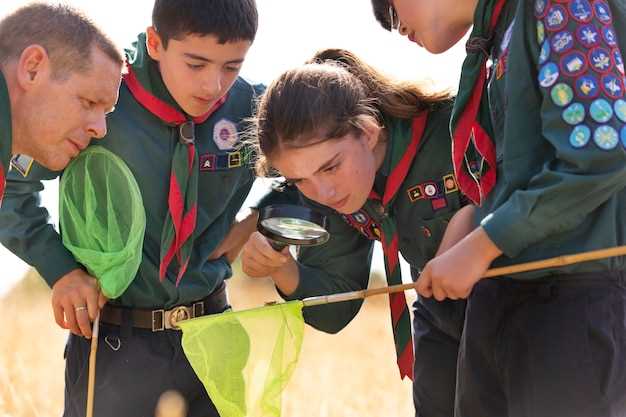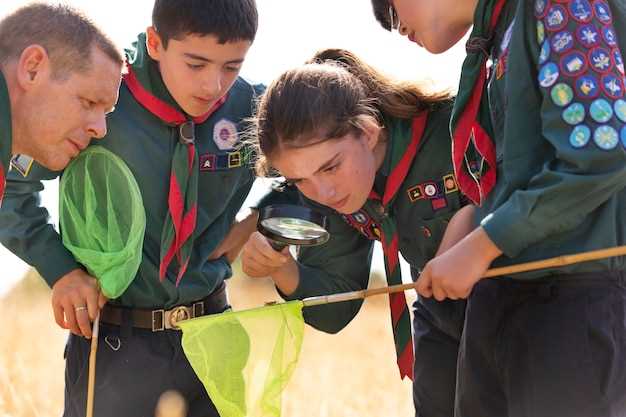The call for transformation resonates deeply within communities worldwide. Individuals seek new pathways that honor tradition while addressing contemporary challenges. This dialogue is not merely academic; it draws from lived experiences and cultural insights. Such insights can illuminate ways to articulate visions for a more just society.
Many believe that wisdom resides in the stories passed down through generations. These narratives often provide a foundation for rethinking existing systems and practices. They reveal the complexities of identity and collective experience. When these voices are centered, the potential for radical reinterpretation emerges, inviting all to engage.
Furthermore, the intersection of heritage and innovation fosters a vibrant discourse. In this dialogue, diverse viewpoints offer rich food for thought. Solutions can be derived not only from policies but from the heart of community living. It is essential to recognize that transformation is intrinsically tied to the shared histories and dreams of the people.
As individuals and groups embark on this vital journey, they uncover new horizons. Real connections between past and present can lead to remarkable initiatives. These endeavors often prioritize holistic well-being over mere compliance with existing standards. In this light, the movement transcends conventional boundaries, empowering those involved to redefine their future.
Empowering Change: Indigenous Perspectives

In recent times, voices from varied cultural backgrounds have gained prominence, bringing new insights into community development and reformative practices. These unique avenues of thought shed light on alternatives often overlooked by mainstream approaches. Listening to these narratives fosters deeper understanding and invites collaboration. As a result, diverse ideas flourish, creating a richer tapestry of knowledge.
The need for renewal in educational practices sparks conversations around traditional wisdom. Through this lens, cultural values are not static but dynamic, capable of adapting to contemporary realities. Communities thrive when they can blend age-old teachings with modern methodologies. This integration helps to form a more inclusive dialogue that respects all forms of knowledge.
Moreover, engaging with these ideas encourages active participation from different stakeholders. It inspires a collective sense of responsibility toward nurturing future generations. Thought leaders within these communities frequently emphasize the importance of grassroots involvement. They advocate for frameworks that reflect the unique needs and aspirations of their people.
This holistic approach ultimately strengthens the relationship between learners and educators. By valuing traditional knowledge as an essential component, a foundation is laid for sustainable development. Exploring the intersection of heritage and progress can lead to profound transformations in practices and policies.
As the world confronts various challenges, embracing alternative methods becomes increasingly essential. Acknowledging multiple viewpoints not only enriches the conversation but also drives innovative solutions. Through collaboration and shared learning, a path forward emerges, one that honors diverse histories while forging new avenues for success. The importance of collective wisdom cannot be overstated, as it holds the potential to reshape futures in meaningful ways.
Social Movements and Indigenous Voices

In recent times, the call for justice and recognition has resonated deeply. Many groups seek to highlight their unique experiences. This wave of activism has sparked conversations worldwide. Communities strive to reclaim narratives often overshadowed by dominant cultures.
Voices once sidelined are now at the forefront. They share stories filled with resilience and strength. Through art, protest, and online platforms, they communicate vital issues. Their messages are rich with history, cultural pride, and aspirations for the future.
Such expressions not only challenge the status quo but also foster understanding across diverse populations. As they confront stereotypes and misinformation, these individuals articulate the need for respect and representation. They underline how collective efforts can pave the way for inclusive dialogues and healing.
Moreover, these narratives possess the power to influence policy changes. By engaging in discussions about land rights, education, and cultural preservation, various communities are actively shaping a new reality. They emphasize the importance of perspective, aiming for a world where all voices contribute to the symphony of progress. As history unfolds, the impact of these expressions continues to grow, calling for a deeper acknowledgment and appreciation of multifaceted identities.
Historical Context of Indigenous Activism
The roots of activism among native peoples can be traced back many generations. Struggles for rights and recognition have been woven into the fabric of their existence. Communities have long faced challenges, including dispossession and cultural erasure. Resistance was often met with oppression, yet the spirit of advocacy remained resilient.
Throughout history, alliances formed in response to injustices. These collaborations were sometimes local but could also extend across regions. Individuals began to articulate their needs beyond mere survival. The collective action often emphasized the importance of heritage, language, and identity.
Activism evolved through different eras, showing the dynamic nature of these movements. In the late 19th and early 20th centuries, the emergence of organizations signaled a shift in approach. They aimed to mobilize broader support while addressing specific grievances. During this time, narratives began to shift as more voices joined the chorus of dissent.
The civil rights era of the 1960s profoundly impacted various marginalized groups. This period inspired many to advocate for systemic change in society. It not only highlighted the ongoing struggles but also breathed new life into traditional practices. The desire for self-determination drove many to seek opportunities for education and empowerment.
In recent decades, communities have utilized diverse strategies to assert their rights. Grassroots campaigns often blend cultural revival with contemporary activism. Knowledge-sharing has become a crucial element of these efforts. By embracing both traditions and modern methodologies, they navigate the complexities of today’s world.
Key Figures in Indigenous Social Movements
Throughout history, many leaders have played crucial roles in advocating for their communities. These individuals often emerged from rich cultural backgrounds, influenced by tradition and resilience. Their activism is not just a quest for rights, but a passionate defense of identity. Each figure has left an indelible mark on society. They inspire future generations to continue the fight for recognition.
One prominent leader is Wilma Mankiller, who was the first female chief of the Cherokee Nation. Under her leadership, she focused on community development, health care, and education reforms. Mankiller’s vision was profound; she understood that empowerment starts within the community. Another notable activist is Buffy Sainte-Marie, whose music and activism highlighted issues faced by Native communities. She utilized her platform to raise awareness and inspire solidarity.
Additionally, Leonard Peltier stands out as a symbol of injustice and resistance. His ongoing fight for freedom has garnered international attention, underscoring the ongoing struggles faced by many. Figures like Peltier remind us of the long-lasting impacts of systemic oppression. Yet, their legacies also ignite hope, demonstrating the power of persistence.
Furthermore, Deb Haaland, serving as a U.S. Secretary of the Interior, exemplifies modern leadership. She has advocated for environmental justice and the protection of sacred lands. Through her position, she seeks to uplift marginalized voices and bridge gaps between communities and policymakers. These representatives are instrumental, guiding the next generation towards a brighter future.
In examining these key personalities, we recognize the diverse yet unified efforts across different tribes and communities. Their endeavors reflect a commitment to cultural preservation and social justice. As history unfolds, these individuals continue to shape dialogues around identity, rights, and governance.
The Role of Community in Advocacy
In any initiative aimed at fostering progress, the involvement of the community is paramount. Communities bring diverse insights and experiences that shape approaches to pressing issues. They are not merely participants; they are the heartbeat of advocacy efforts. When individuals unite, their collective voice amplifies the message and enhances the potential for meaningful impact.
It is within these communal spaces that trust is cultivated. Shared experiences foster strong bonds among members. As understanding deepens, so does the resolve to address concerns. Community rallies often serve as catalysts for action, igniting passion among participants. From local gatherings to larger demonstrations, the energy is palpable.
Furthermore, the collaboration within these groups often leads to innovative strategies. When faced with challenges, communities draw on their unique strengths and resources. This synergy enables them to navigate obstacles effectively and adapt as circumstances evolve, allowing for a more resilient response to advocacy needs.
In essence, community is the backbone of any effective advocacy initiative. It creates a framework for dialogue and collaboration, allowing voices to be heard and valued. Without such a foundation, efforts may lack the necessary support and direction, ultimately diminishing their impact. Through active involvement and mutual support, communities can transform aspirations into tangible outcomes, demonstrating that collective action is indeed a powerful force for progress.
Global Impact of Indigenous Activism
The influence of native-led initiatives can be seen across various issues worldwide. Their tireless efforts have resonated beyond local communities. These advocates bring attention to critical matters that affect both nature and society. They inspire a deeper understanding of cultural richness, historical narratives, and ancestral wisdom.
Grassroots initiatives often challenge the status quo. They demand recognition and respect for diverse experiences. By engaging in dialogues, they foster connections that transcend borders. Through protests, art, and storytelling, these voices create ripples of awareness.
Consequently, their actions not only highlight injustices but also promote sustainable practices. Global awareness has surged in recent years regarding land rights, climate change, and cultural preservation. This shift in consciousness has influenced policymaking and public discourse in many nations. Moreover, the narratives brought forth emphasize the importance of harmonizing human existence with the natural world.
As voices of resilience, they remind us of our shared responsibility for the planet. Allyship has emerged from these movements, encouraging collaboration across different sectors. In urban centers and remote areas, the call for equity resonates strongly. Their commitment propels discussions around environmental stewardship and human dignity forward.
In summary, the impact of these initiatives extends far beyond their origins. Each action embodies the hope for a more equitable future. By illuminating diverse voices, they empower others to seek justice, cultivate understanding, and embrace cultural heritage. The ripple effects remind us that the fight for rights and respect knows no boundaries.
Reforming Education Through Indigenous Insights

Rethinking our approaches to learning is crucial. Views from diverse communities provide unique frameworks. These insights reflect deep-rooted values and traditions. Such elements can create pathways to profound development. Drawing from rich cultural tapestries enriches educational experiences.
Traditional knowledge systems often emphasize interconnectedness with the environment, instilling a sense of responsibility. Students can learn about their heritage while exploring contemporary issues. Approaching education through these lenses cultivates critical thinking. It also fosters respect for different ways of knowing. Knowledge becomes a living process rather than mere information transfer.
Understanding the importance of storytelling cannot be underestimated. Stories carry wisdom and experiences across generations. They serve as vessels for cultural teachings and lessons. When integrated into curricula, narratives captivate and engage learners deeply. This method transforms classrooms into vibrant spaces where dialogue flourishes.
Collaboration with community members opens doors to fresh methodologies. Workshops, mentorships, and experiential learning create dynamic atmospheres. Connecting classrooms with local practices bridges gaps between theory and application. This approach nurtures a sense of belonging among students. Each learner becomes a part of something greater than themselves.
Ultimately, transforming learning environments involves more than curriculum changes. It’s about embracing holistic approaches that resonate with students’ identities. This kind of evolution thrives on respect, inclusion, and acknowledgment of diverse experiences. Consequently, educational spaces can become havens for growth, understanding, and collective progress.
Culturally Relevant Curriculum Development
Creating relevant educational content is crucial for engaging students.
It should reflect the diverse backgrounds and experiences of learners.
Such an approach fosters a sense of belonging and pride.
When students see themselves in what they study, connections deepen.
A thoughtfully designed curriculum incorporates cultural elements, historical narratives, and local knowledge; it serves not just to inform but to inspire. By integrating these aspects, educators not only validate the identities of students but also cultivate an enriching environment that promotes critical thinking and dialogue.
- Address the needs of various communities.
- Include local languages and traditions.
- Utilize collaborative teaching methods.
- Incorporate stories that resonate with student lives.
The key lies in recognizing the unique contributions each culture brings to the table. Curriculum developers must engage with community members, ensuring their voices are heard and included. This collaboration can lead to innovative teaching practices that awaken curiosity and foster respect. When cultural relevance is prioritized, the learning experience transforms, becoming more meaningful and impactful.
- Research local histories and cultures.
- Involve local experts and community leaders.
- Adapt materials to reflect contemporary issues.
- Encourage exploration of different cultural viewpoints.
An inclusive approach not only enhances student engagement; it prepares them to thrive in a multicultural society. By valuing diverse narratives, educators help shape well-rounded individuals who are ready to face global challenges with empathy and understanding.
Collaborative Approaches to Education Reform
Collaboration in the realm of academic transformation is essential. It can bridge gaps between varied communities and ideas. This involves gathering diverse voices to shape a more inclusive framework. When multiple stakeholders unite, they create a powerful dialogue for innovation. Engaging parents, educators, and students fosters a healthier learning environment.
Working together often results in unique solutions. Everyone brings their own experiences and knowledge. This synergy enhances understanding of different needs. Various approaches emerge, driven by a shared commitment to progress. Empowering multiple groups leads to richer discussions.
Ultimately, the crux lies in communication. Establishing open lines fosters trust and facilitates cooperation. In many instances, traditional systems overlook vital elements. Rethinking these frameworks through comprehensive teamwork is refreshing. Such alliances pave the way for tailored learning experiences.
| Stakeholder | Role |
|---|---|
| Parents | Provide insight on student needs and community expectations |
| Teachers | Implement strategies and deliver content effectively |
| Administrators | Support initiatives and facilitate resource allocation |
| Students | Offer feedback on learning experiences and engagement |
This multi-faceted strategy ultimately cultivates a sense of belonging for all participants involved. The collective strength found in these alliances cannot be overstated; it offers pathways to realize the full potential of every learner while addressing specific community challenges. Hence, it is vital to focus on forging sustainable partnerships that yield meaningful dialogues and actionable outcomes.
Benefits of Indigenous Knowledge in Schools
Incorporating traditional wisdom into academic settings enhances the learning experience. It brings diversity and context to the curriculum. Students gain a broader worldview. This knowledge fosters respect for different cultures.
Moreover, integrating this understanding offers practical life skills. Learners engage with their communities. They connect more deeply with nature and local practices. Understanding these traditions can promote environmental stewardship.
- Encourages critical thinking and problem-solving.
- Strengthens identity among students.
- Promotes community involvement and collaboration.
- Fosters respect and appreciation for different cultures.
Additionally, when schools embrace local ways of knowing, they empower youth to explore their roots, enriching the fabric of society as they contribute to a more inclusive understanding of history and knowledge.
- Develops holistic approaches to education.
- Enhances students’ communication skills.
- Inspires creativity through traditional arts and storytelling.
Thus, integrating knowledge from local cultures not only benefits students academically but also cultivates a sense of belonging and responsibility towards their heritage and environment.
Video:
Empowering Change in Feminism | Sanvika Pasumarthi | TEDxEmpire Ranch Youth
Empowering Change in Feminism | Sanvika Pasumarthi | TEDxEmpire Ranch Youth by TEDx Talks 211 views 1 month ago 4 minutes, 7 seconds
Q&A:
How do Indigenous perspectives influence social movements today?
Indigenous perspectives bring a unique understanding of community, sustainability, and justice to social movements. They emphasize the importance of traditional knowledge, collective responsibility, and interconnectedness with nature. This holistic approach encourages movements to prioritize grassroots involvement and recognize the historical and cultural contexts of the issues at hand. By incorporating Indigenous voices, social movements can become more inclusive and effective, highlighting systemic injustices and advocating for equitable solutions that benefit all marginalized communities.
What role does education play in empowering Indigenous communities in social movements?
Education plays a crucial role in empowering Indigenous communities by providing them with the tools needed to advocate for their rights and reclaim their narrative. Culturally relevant education that includes Indigenous histories and perspectives fosters a sense of identity and pride among Indigenous youth. It encourages critical thinking and activism, allowing individuals to challenge oppressive systems and advocate for change. Additionally, educational reform that prioritizes Indigenous methodologies and languages helps preserve cultural heritage and equips communities to effectively engage in social movements, ultimately leading to greater self-determination and resilience.
Can you explain how Indigenous social movements differ from other social movements?
Indigenous social movements often differ from other social movements in their fundamental connection to land, culture, and identity. While many social movements focus on broad issues like civil rights or environmental justice, Indigenous movements typically address specific historical injustices, treaty rights, and the impact of colonization. These movements are deeply rooted in a collective identity and often employ traditional practices and values in their activism. Furthermore, Indigenous movements may prioritize holistic approaches that consider the well-being of future generations, emphasizing stewardship of the environment, cultural preservation, and spiritual connections to the land, which can differentiate them from other activist frameworks.
What practical steps can educators take to include Indigenous perspectives in their curriculum?
Educators can incorporate Indigenous perspectives in their curriculum by first engaging with local Indigenous communities and leaders to ensure that content is accurate and respectful. They should aim to include Indigenous histories, languages, and philosophies within various subjects, creating a more inclusive educational environment. Additionally, incorporating Indigenous literature, art, and traditional ecological knowledge can enrich students’ learning experiences. Educators should also emphasize critical thinking about colonial histories and current issues faced by Indigenous groups, encouraging discussions that promote empathy and understanding. Professional development and resources focused on Indigenous pedagogy can further equip teachers to effectively integrate these perspectives into their classrooms.
What impact have Indigenous-led movements had on policy changes regarding educational reform?
Indigenous-led movements have had a significant impact on policy changes regarding educational reform, advocating for more equitable and culturally relevant educational systems. These movements have successfully influenced policies that prioritize Indigenous rights to language, land, and self-determination in education. For example, some regions have seen the establishment of Indigenous educational programs that recognize and respect Indigenous knowledge systems. Moreover, increased awareness of the importance of reconciliation has led to initiatives aimed at decolonizing curricula, providing training for educators about Indigenous issues, and involving Indigenous representatives in decision-making processes. These changes foster a more inclusive educational landscape that reflects the diversity and richness of Indigenous cultures and histories.
